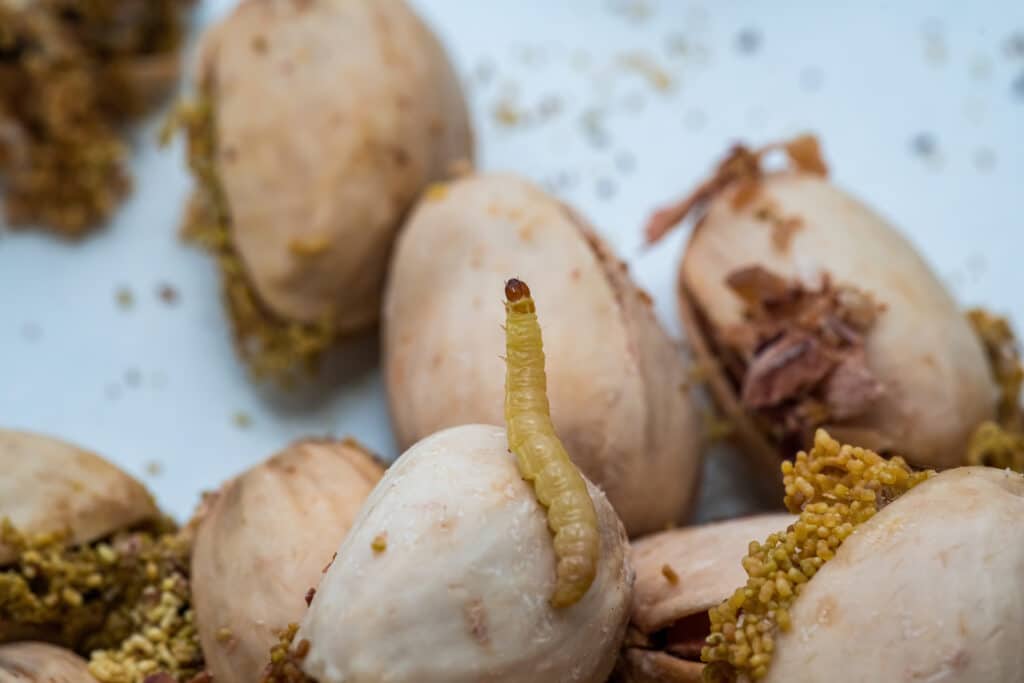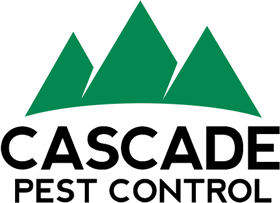Author: Kurt Treftz, Cascade Pest Control
Winter seems the perfect break from pests like mosquitoes, flies, and other creepy crawlies. As the temperatures cool, many of these creatures enter a state of diapause. They stop moving, eating, or reproducing, and just take a break. So you might expect that you could take a break too. Unfortunately, that isn’t always the case. Take the annoying, pesky, pantry moth as an example.
Seattle winters, while not terribly frigid, do get cold enough to slow down the life cycle of many pests including the pantry moth. Pantry moths (also commonly known as Indian meal moths) tend to lay their eggs just before entering this dormant state. And guess what? Just when you thought you were getting a pause these creatures enter into your home, an artificially warm environment, and hatch. Voila, pantry moths in winter!
What are pantry moths?
- Appearance: Pantry moths are about ½ inch in length with a wing span of up to ⅝ inch. Their distal wings are reddish brown, bronze, or dark gray with a dark band separating it from the proximal parts which are paler in color. The hindwings are generally gray. The eggs are white, oval, and very small. They are difficult to detect. The larvae grow to about ½ inch and move quite quickly with three sets of legs near the head and five sets of prolegs on the abdomen.
- Lifecycle: After eggs are laid, they hatch within 2-14 days (often depending on the temperature), so if an egg is brought into an artificially warm home it could hatch quickly. Larvae grow and spin webs / silk threads as they eat pretty continually for 4-10 days. Once they reach adulthood, they mate and reproduce, starting the cycle all over again. Depending on several factors (food, temperature) this species’ lifecycle is 30-300 days. Average of 50 days.
- Food source: As their name implies, pantry moths are drawn to the food in your pantry. Stored grains like cereal, flour, rice, and pasta as well as dried fruit, nuts, chocolate, and pet food.

How do pantry moths enter your home?
So, just how are these pests getting into your home? Unfortunately, it can be all too easy to open your home to these creatures.
- Groceries. One very common way that pantry moths enter your home is in the groceries you bring home. You are likely not even aware that they have tagged along in your rice, flour, or cereal. The eggs are nearly invisible to the naked eye.
- Garage storage. If you bring lawn and garden implements and sports equipment into your garage over the winter, you might unknowingly bring some pests with them.
- Luggage. Like bed bugs, pantry moths are insidious little travelers. Believe it or not, they can sometimes hitch a ride on or in your suitcase.
- Entry points (like cracks and poor insulation). Of course, the usual entry points for pests are not exempt. Cracks and other places where insects can enter your home aren’t safe from moths.
How can I stop pantry moths?
- Inspect items before purchase. Take a little time while grocery shopping to check out the packages you are buying. Look for signs of damage, holes, tears, or even webbing that could indicate the food has been exposed. If there is a chance that a package has been contaminated, don’t purchase it. Bulk bins are also notorious for breeding pantry moths. If you are concerned, avoid buying in bulk.
- Seal food in air-tight, thick-walled containers. Pantry moth larvae can eat their way through paper, cardboard, and soft plastic so store food in heavy-duty containers that are sealed air-tight. While this might not solve the problem, it is a helpful deterrent.
- Elevate luggage. Discourage moth infestation by keeping your suitcase off the ground while you are traveling. Also, keep it zipped closed. Moths are attracted to warm, dark, quiet, sheltered spaces and your luggage pretty much fits the bill.
- Tidy up the garage. If you do store items in your garage during the winter, spend a minute or two cleaning things up. Also, storing birdseed or pet food in the garage could be a source of attraction for pests. Seal it tightly or keep it outside. Remember to close your garage door when not in use.
- Get professional help. Getting rid of an infestation can be a time-consuming, wasteful, and expensive process as you have to throw away contaminated items, disinfect all infested areas, and hope they don’t come back. Let the professional at Cascade Pest Control help you control your pantry moth infestation.
